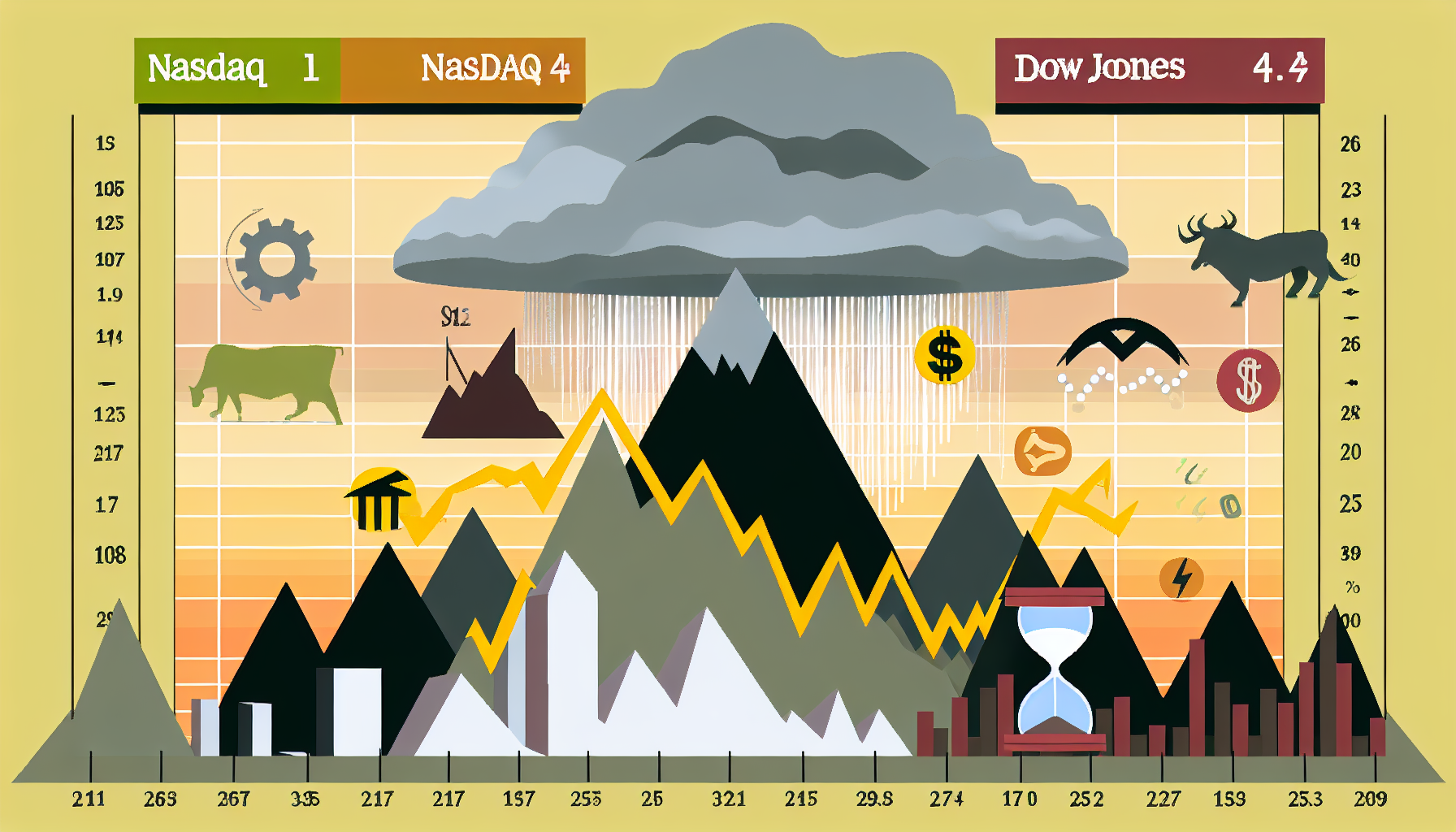
#StockMarket2024 #InvestorSentiment #FederalReserve
Stock Market Wrap-Up: December 17, 2024
As the trading day came to a close on December 17, 2024, Wall Street presented a mixed picture, reflecting the complex interplay of investor sentiment, economic indicators, and the looming Federal Reserve meeting. Here’s a detailed breakdown of the key events and what they signify for the market.
Benchmark Performance
The Dow Jones Industrial Average ($DJI) ended the day on a slightly sour note, dropping 110.58 points, or 0.3%, to close at 43,717.48. This decline was driven by 17 of the 30 components of the index ending in negative territory, while 13 managed to stay in the green.
In stark contrast, the tech-heavy Nasdaq Composite soared to a record high, gaining 247.17 points, or 1.2%, to close at 20,173.89. This robust performance underscores the continued strength and optimism in the technology sector.
The S&P 500 also saw a positive day, rising 22.99 points, or 0.4%, to close at 6,074.08. Four of the 11 broad sectors of the S&P 500 finished in the green, with the Consumer Discretionary Select Sector SPDR ($XLY), the Technology Select Sector SPDR ($XLK), and the Communication Services Select Sector SPDR ($XLC) advancing 1.4%, 1%, and 0.4%, respectively. However, the Energy Select Sector SPDR ($XLE) took a significant hit, plunging 2.2%[1].
Investor Sentiment and the Fear & Greed Index
Investor sentiment played a crucial role in today’s market movements. The Fear & Greed Index, developed by CNN Business, provides a valuable gauge of how emotions influence investor decisions. This index calculates a score ranging from 0 (Extreme Fear) to 100 (Extreme Greed) based on seven market indicators: stock price momentum, stock price strength, stock price breadth, put and call options, junk bond demand, market volatility, and safe-haven demand[2][5].
While the specific Fear & Greed Index score for December 17, 2024, is not available, the market's mixed performance suggests a balance between fear and greed. The rise in the Nasdaq Composite and S&P 500 indicates a level of greed or optimism, particularly in the technology sector. However, the decline in the Dow Jones and the increase in the CBOE Volatility Index (VIX) by 6.4% to 14.69 suggest that fear is still a lingering factor, especially with the upcoming Fed meeting[1].
Federal Reserve Expectations
The Federal Reserve's December meeting looms large over the market, and investors are closely watching for any signals on future interest rate decisions. Market participants are almost certain that the Fed will cut rates by another 25 basis points, bringing the range to 4.25-4.50%. This expectation is reflected in the CME’s FedWatch tool, which shows a 95.4% probability of a 25 basis point cut. However, there is also a sense that the Fed might pause in January and maintain a hawkish stance to keep inflation in check[1].
Market Volatility and Trading Activity
Market volatility was evident in the trading activity. A total of 15.3 billion shares were traded on Monday, higher than the last 20-session average of 14 billion. On the NYSE, decliners outnumbered advancers by a 1.27-to-1 ratio, while on the Nasdaq Composite, advancers outnumbered decliners by a 1.05-to-1 ratio. This mixed trading activity highlights the ongoing uncertainty and cautious optimism among investors[1].
Top Performers and Sector Analysis
Despite the mixed day, several stocks stood out for their impressive performance. In the S&P 500, companies like Nvidia ($NVDA), which has seen a 179.2% increase in 2024, and other top performers such as Vistra ($VST) with a staggering 315% gain, and Palantir Technologies ($PLTR) with a 290.7% increase, continue to drive investor interest and optimism[4].
The technology sector, in particular, has been a bright spot, with companies like Apple ($AAPL), Microsoft ($MSFT), and Amazon ($AMZN) showing significant gains. Apple rose 23.3%, Microsoft gained 12.6%, and Amazon increased by 36.9% in 2024. These tech giants continue to influence market sentiment and drive overall performance[4].
Economic and Market Implications
The stock market's movements are intricately linked to broader economic health and investor sentiment. Macroeconomic indicators such as interest rates, inflation, and GDP growth significantly influence market behavior. Today’s mixed performance reflects the delicate balance between positive and negative news, as well as the anticipation of future economic policies.
The upcoming Fed meeting will be a crucial event, as it will set the tone for interest rates and economic growth in the coming months. Investors are watching closely for any signs of a soft landing, where the economy slows down enough to control inflation without slipping into a recession.
Conclusion
As the stock market navigates through the complexities of economic indicators, investor sentiment, and central bank decisions, it is clear that 2024 has been a year of significant volatility and opportunity. The rise of the Nasdaq Composite to a record high and the mixed performance of other benchmarks underscore the ongoing battle between fear and greed.
For investors, understanding these dynamics is crucial. The Fear & Greed Index serves as a valuable tool to gauge market sentiment, helping investors make informed decisions about market timing, risk management, and portfolio rebalancing.
As we approach the end of 2024, the stock market remains a dynamic and unpredictable entity, influenced by a myriad of factors. Staying informed and maintaining a long-term perspective will be key to navigating the ups and downs of the market in the coming year.









Leave a Reply